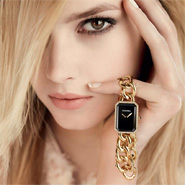- About
- Subscribe Now
- New York,
April 25, 2013

DANA POINT, CA – Two out of three affluent consumers are open to discovering new luxury products and experiences this year, according a new survey from American Express Publishing and Harrison Group presented at the American Express Publishing Luxury Summit 2013.
“The Survey of Affluence and Wealth in America: 2013” deemed the “Worth Dominant” consumer – someone who focuses on quality, craftsmanship and service to rationalize price – as the most valuable prospect for luxury marketers. The report uncovered the behavior of the top 10 percent of U.S. households coming out of the country's economic recession.
“The result was a radical transformation in the way that consumers made decisions specifically about luxury,” said Jim Taylor, vice chairman of the Harrison Group, New York.
The eighth annual Survey of Affluence and Wealth in America included participants with at least $100,000 in discretionary household income, meant to represent the top 10 percent of U.S. consumers.
The survey conducted during the first quarter of 2013 grouped respondents into three categories: Upper Middle Class consumers with discretionary incomes of $100,000-$149,999, Core Affluent consumers with discretionary incomes of $150,000-$449,999 and One Percenters with household incomes of $450,000 or more.
Worthy of luxury
The report forecasts healthy growth for the luxury industry during the remainder of 2013.
Categories expected to thrive include travel, automotive, home entertainment and electronics and jewelry and watches. Also, second home sales are expected to rise among the One Percenters.
Respondents across the board are looking forward to spending more money this year than last year, including 37 percent of the One Percenters.
In particular, affluent consumers are looking forward to buying luxury goods and services more than they did last year, including 31 percent of the One Percenters.
This year’s survey paid special attention to the 19 percent of responds that are categorized as Worth Dominant, a term that was introduced to the report in 2012. These luxury shoppers value, understand and celebrate luxury.
The Worth Dominant group increased since last year. Now 28 percent of the One Percenters, 17 percent of the Core Affluent and 14 percent of the Upper Middle Class are Worth Dominant.
Deal Dominant consumers, made up of those who focus on price over quality, decreased across the three groups as well.
Worth Dominant consumers are less open to brand messaging that overly promotes products and services as luxury.
Sixty-three percent of these respondents believe that most new products that are described as luxury are not what they consider to be luxury.
Instead, Worth Dominant consumers will respond more positively to messaging that appeals to their personal interests, self-awareness and lifestyle.
On the prowl
Two in three respondents of the Survey of Affluence and Wealth in America as well as 88 percent of Worth Dominant consumers are open to discovering new luxury products and experiences.
One in three of survey respondents discover luxury by chance and one in five set a group of brands from which they seek new luxury products.
Furthermore, 31 percent of Worth Dominant consumers versus 12 percent of all respondents seek out and look for new luxury products beyond a set group of brands.
All respondents are most likely to discover luxury via up-close yet impersonal channels such as in-store shopping or browsing, online shopping or browsing, looking at mail that they signed up for and seeing luxury while shopping, travelling or being with friends.
Across paid content, 42 percent of Worth Dominant consumers discover luxury through advertising in print magazines, 30 percent through advertising in print newspapers and 30 percent through television commercials.
Eighty-one percent of these consumers are "more likely to consider a brand when its advertising is tailored to me" and 55 percent of all respondents believe the same.
Also, 71 percent agreed "I love it when I see great advertising for the things that are really worth owning.” Forty-nine percent of all respondents agreed to this statement as well.
Now, affluent consumers are loyal to a category of brands rather than a few brands in each category.
“There is incredible brand loyalty,” Mr. Taylor said. “What’s going on though is that the original brand loyalty rules were when people owned one car, but now they own four or five cars.
“They will be loyal to Mercedes, but there will be brands that they are also loyal to.”
Final Take
Tricia Carr, associate reporter on Luxury Daily, New York
Share your thoughts. Click here